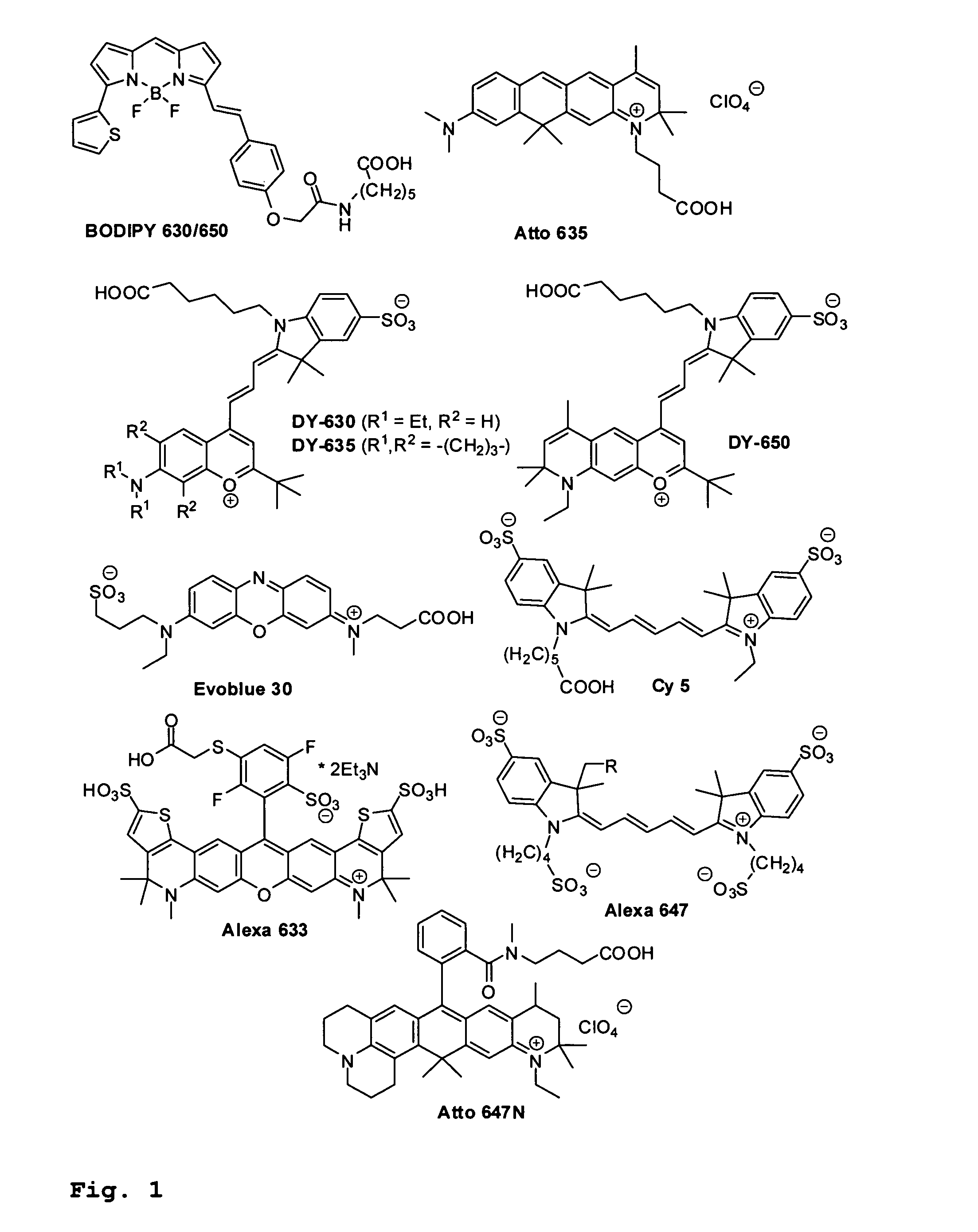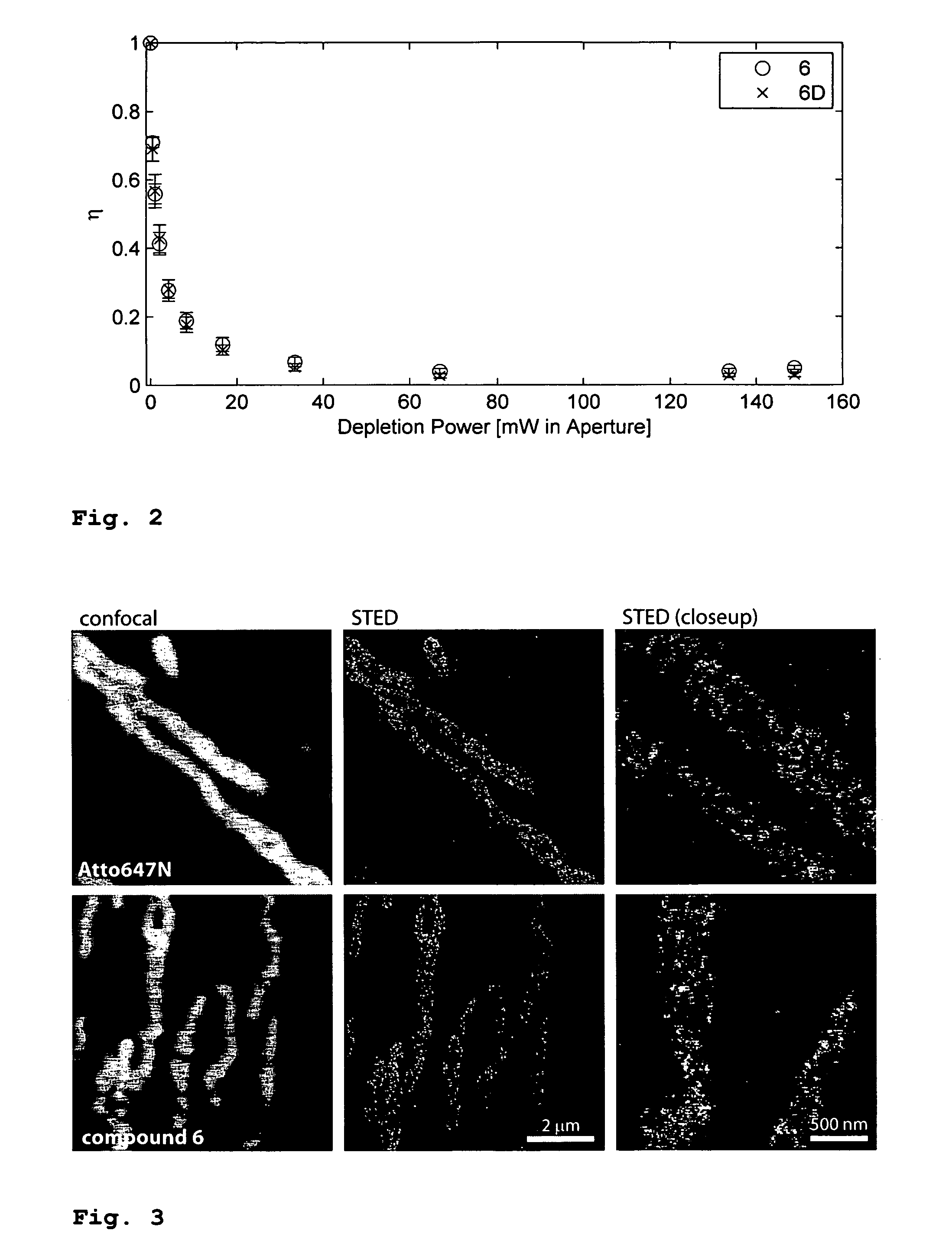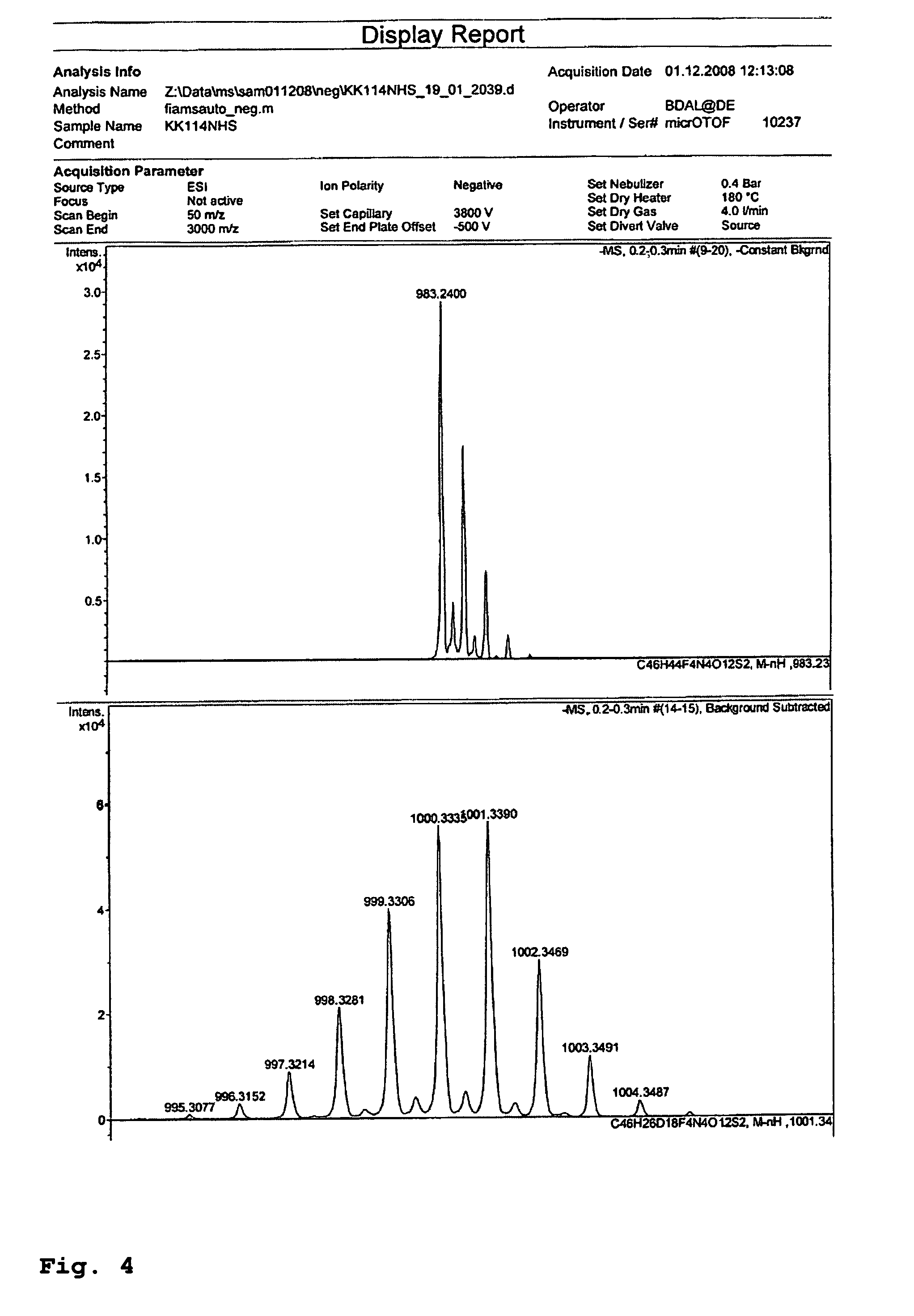Hydrophilic and lipophilic rhodamines for labelling and imaging
a lipophilic rhodamine and labelling technology, applied in the preparation of sugar derivatives, chemiluminescene/bioluminescence, peptides, etc., can solve the problems of low coupling efficiency, photobleaching of fluorophores, and substantial drawbacks of bodipy® derivatives
- Summary
- Abstract
- Description
- Claims
- Application Information
AI Technical Summary
Benefits of technology
Problems solved by technology
Method used
Image
Examples
example 1
Synthesis of Specific Rhodamine Compounds
10-Methoxy-5,5,7-trimethyl-2,3-dihydro-1H,5H-pyrido[3,2,1-ij]quinoline (2-Me)
[0072]The alkylation of compound 1 with 1-bromo-3-chloropropane was carried out similarly to the procedure described in U.S. Pat. No. 6,372,907 for its closest analog, the corresponding 10-pivaloyl ester. To a solution of compound 1 (2.71 g, 13 mmol) and 1-bromo-3-chloropropane (8.32 g, 53 mmol) in CH3CN (45 mL), the finely ground powders of NaHCO3 (2.18 g, 26 mmol) and KI (17.3 g, 0.104 mol) were added, and the mixture was refluxed for 25 h with vigorous stirring. The solids were filtered off at room temperature and washed with CH2Cl2 (2□60 mL). The organic solutions were combined, washed with water (2□100 mL), dried and evaporated in vacuo. The residue was separated over a column with silica gel (100 g) using a hexane / CH2Cl2 (4:1) mixture as a mobile phase. The main fraction was evaporated in vacuo to afford 2.64 g (83%) of compound 2-Me as colorless crystals with ...
example 2
Synthesis of Deuterated Rhodamine Compounds
Deuterated Analogue of Compound 1.
[0087]The method for the preparation of 1 outlined by L. A. Robinson and M. E. Theoclitou [Tetrahedron Lett. 2002, 43, 3907-3910] was used utilizing [D6]-acetone as a starting material. An additional treatment of the evaporated reaction mixture with MeOD in order to “restore” the methine deuterium atoms in the fragment CCD3=CD was necessary. They proved to be largely (and unexpectedly) exchanged to H in the course of the synthesis. Presumably, the methine groups coordinate to the ytterbium catalyst and then receive protons from H2O formed in the course of the reaction or added during the work-up.
[0088]Finely powdered ytterbium(III) triflate (the commercially available hydrate, 1.30 g, ˜26 mmol) was dried in a Schlenk flask with stirring at 130° C. for 1.5 h. Then the flask was filled up with argon, cooled to 0° C., and a solution of m-anisidine (1.75 g, 14 mmol) in [D6]-acetone (92 mL, 1.14 mol) was added i...
example 3
Microinjection Tests of Compound 6 and of the Commercial Dye Atto 647N
[0091]The commercial dye Atto 647N is preferred in many fluorescence microscopy studies, especially when high excitation powers are used. It has a superior photo stability compared to other dyes. For live cell studies, it is desirable to introduce aqueous solutions of the dye (e.g. coupled to antibodies) via microinjection into cells. However, it was found that this is impossible with the Atto 647N dye because it is too lipophilic and sticks to the walls of the glass capillaries used for injection. These tests were performed with a ˜0.5 μM solution of Atto 647N in water or PBS, filled into microinjection pipettes (Femtotips®, Eppendorf, Hamburg, Germany and home made capillaries). The capillaries got blocked by the dye and no fluid could be injected, even under the maximally available pressure of ˜4000 hPa. The walls, but not the interior of the capillaries brighten up when irradiated. On the other hand, if 50% (v...
PUM
| Property | Measurement | Unit |
|---|---|---|
| wavelengths | aaaaa | aaaaa |
| fluorescence quantum yields | aaaaa | aaaaa |
| temperature | aaaaa | aaaaa |
Abstract
Description
Claims
Application Information
 Login to View More
Login to View More - R&D
- Intellectual Property
- Life Sciences
- Materials
- Tech Scout
- Unparalleled Data Quality
- Higher Quality Content
- 60% Fewer Hallucinations
Browse by: Latest US Patents, China's latest patents, Technical Efficacy Thesaurus, Application Domain, Technology Topic, Popular Technical Reports.
© 2025 PatSnap. All rights reserved.Legal|Privacy policy|Modern Slavery Act Transparency Statement|Sitemap|About US| Contact US: help@patsnap.com



